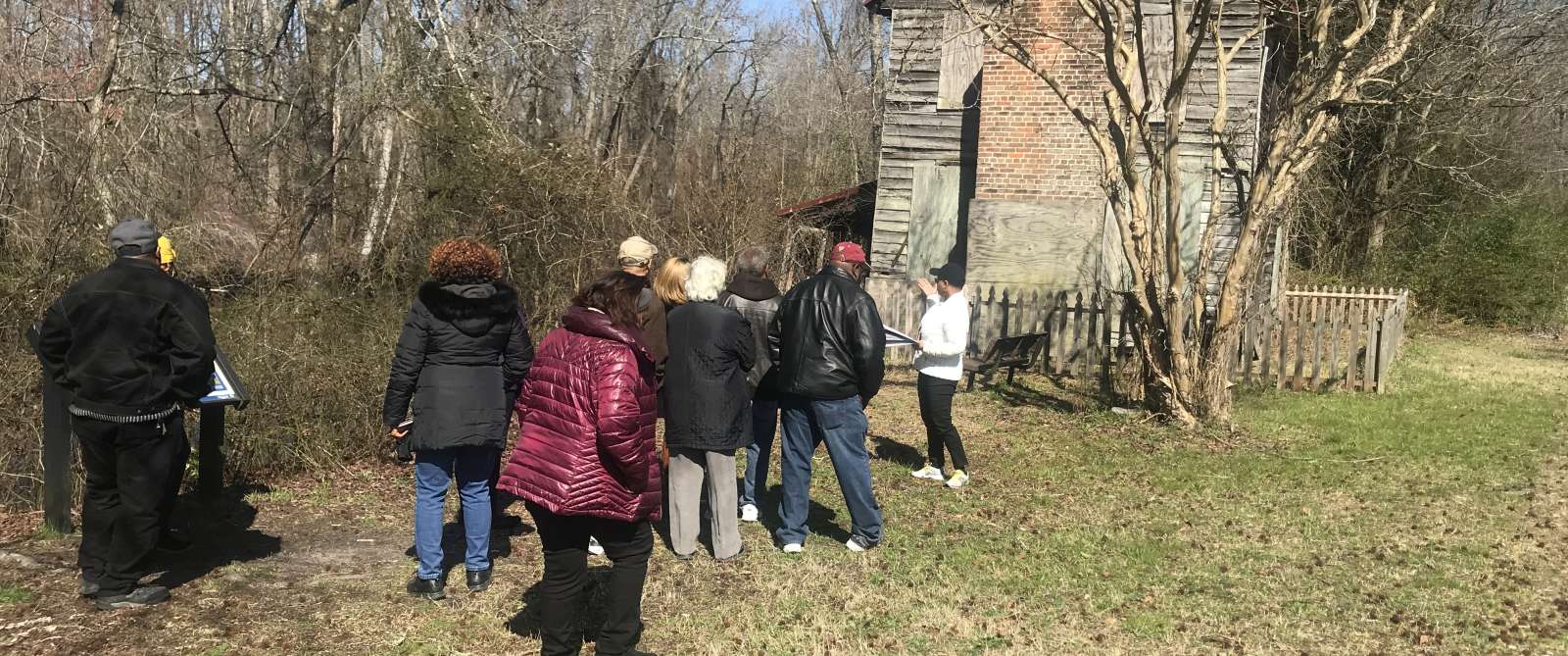Historical Village at the Dismal Swamp Canal
At the 5-mile mark along the Dismal Swamp Canal Trail sits the Superintendent's House. Believed to be the only structure still standing and on land once owned by the Dismal Swamp Canal Company. This structure is a 19th-century version of prefabricated housing. First constructed elsewhere, pieces of the building had Roman numerals making it easier to put back together. They were placed on a barge that floated on the canal. It's very likely the cedar shingles could be from the abundance of trees that were in the swamps.
By the mid-1800s, activity on the Dismal Swamp Canal increased greatly. The Canal was a key place for commerce and the transporting of goods by boat in and out of the area.
Underground Railroad
While the dense forests of the Great Dismal Swamp provided refuge for freedom seekers, the busy traffic on the Dismal Swamp Canal was also a benefit, providing a route to freedom for many. Imagine the buzz of activity, with trading boats filled with goods and merchants along the roadside. In her book, "Virginia Waterways and the Underground Railroad," Dr. Cassandra Newby-Alexander explains: "Slaves in Virginia in the 1850s secured transit on small trading boats coming from Portsmouth and Norfolk, either secretly or with the consent of captains. While the majority of fugitives departing aboard ships come from the cities and counties of Hampton Roads, some did not. The area around Norfolk County (the Dismal Swamp), linked regions as far away as Florida and as close as eastern North Carolina through a continuous line of swamps offering a refuge for those seeking liberty and freedom. With an average of 1,000 to 1,500 ships sailing annually into Hampton Roads harbors throughout the 1850s, it was difficult to monitor activities."
The waterways presented a perfect setting for enslaved people to attempt to escape. The canal was the ideal route between Norfolk and North Carolina. In the 1840s and 1850s, transporting goods by railroad meant competition for the canal. Also, the creation of deeper waterways to accommodate large steamboats competed with the Dismal Swamp Canal as the regions' trade route.
The canal that was dug mostly by enslaved people later became a road to freedom for some.
Podcasts
To further explore the history of the Superintendent's House you can listen to Podcast Episode 2: Dismal Swamp Canal - A Wild Refuge for Freedom.
We recommend you listen to Podcast Episode 3 as you continue to your next stop on the Chesapeake African American Heritage Trail.
Parking
Parking for this site is available at the Ballahack Boat Ramp at 3700 Dismal Swamp Canal Trail, a short 5-minute walk.
More on the African American Heritage Trail
Previous Stop
Next Stop
Explore the full list of Chesapeake's African American Heritage Trail locations.







